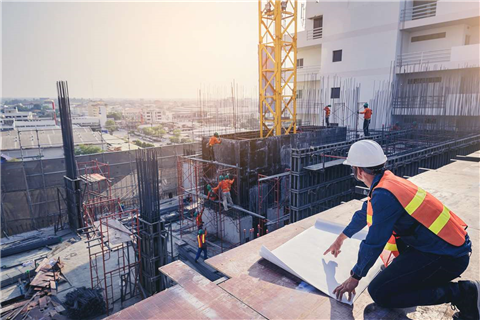Contrary economic indicators suggest a curiously calm 2023
February 02, 2023
 (Photo: AdobeStock)
(Photo: AdobeStock)
Unusual times continue to throw off unusual economic indicators.
- Total construction spending decreased by 0.4% in December, yet industry job openings at the end of the month set a new December high, according to the Associated General Contractors of America’s assessment of two new federal data sets. Association officials said the jobs data signals that the slowdown in construction spending may have been more about changes in weather than demand.
- Total housing starts dropped 1.4% in December over a strong single-family-starts rebound.
- The Commerce Department’s initial estimate of fourth-quarter U.S. gross domestic product — the broadest measure of economic activity — showed 2.9% growth. It was down slightly from the July-to-September period, which grew at 3.2%, but a marked improvement from the first half of the year.
“The record number of job openings in construction compared to previous Decembers suggests contractors are bullish about their backlogs despite a dip in spending in December,” said Ken Simonson, the AGC’s chief economist. “Some of the downturn may have been due to unusually bad weather rather than a shrinking market.”
Spending on private nonresidential construction fell 0.5% in December, while public construction investment declined 0.4%.
A separate government report showed there were 359,000 job openings in construction at the end of the year, a jump of 58,000 or 19% from a year earlier and the highest December total in the 23-year history of the data. Openings exceeded the 217,000 workers hired during the entire month, which suggests contractors wanted to bring on board more than twice as many employees as they were able to find, Simonson added.
The December slide
December construction spending fell in 10 of the 16 nonresidential subcategories. Private nonresidential spending was down 0.5%, while public nonresidential construction spending was down 0.4% in December.
The biggest private nonresidential segment, commercial construction – comprising warehouse, retail, and farm construction – increased 0.4%. Spending on manufacturing plants decreased 2.2%. Private power construction rose 0.5%.
Public categories were also mixed. The largest public segment, highway and street construction, increased 1.1% in December. Spending declined 0.3% for education construction. Investment in transportation facilities rose 0.2%.
December broke a streak of six straight monthly increases in nonresidential construction, according to Associated Builders and Contractors Chief Economist Anirban Basu. “Despite the decline, nonresidential spending is up 13.8% year over year, an increase outpacing both overall inflation (6.4%) and materials prices inflation (+7.6%). More than half of the increase in nonresidential construction over the past year is due to heightened activity in two segments: manufacturing, as megaprojects begin across the nation, and commercial.”
Residential spending shrank due to a 2.3% contraction from November in single-family homebuilding. That outweighed increases of 3.2% in multifamily construction and 0.7% in additions and renovations to owner-occupied houses.
“While contractors remain reasonably confident, according to ABC’s Construction Confidence Index, there is reason for caution,” said Basu. “Worker shortages remain a challenge for contractors, and elevated interest rates have increased borrowing costs, making certain projects unfeasible at the margins while also driving the economy toward a potential recession this year.”
What of recession?
The GDP shrinkage in the first half of 2022, and the looming mid-term elections, spurred a lot of rhetoric about recession, but the economy’s second-half performance repeatedly rolled forecasts of its onset back. Recession’s political leverage expired in mid-November, so the schedule moved to early 2023. Now much of the chatter is focused on late 2024.
Portland Cement Association Chief Economist Ed Sullivan, a leading economist in the cement and construction industries, predicts a stronger U.S. economy during the first half of 2023 than previously expected but expects economic growth to slow this summer.
With the economy showing more near-term resilience, Sullivan expects the Federal Reserve might be more aggressive with rate hikes (his most-recent remarks came before today’s Fed decision to raise the discount rate just 0.25%). He says a recession, characterized by unemployment of 6%, is unlikely.
STAY CONNECTED



Receive the information you need when you need it through our world-leading magazines, newsletters and daily briefings.
CONNECT WITH THE TEAM








